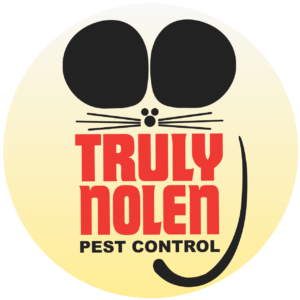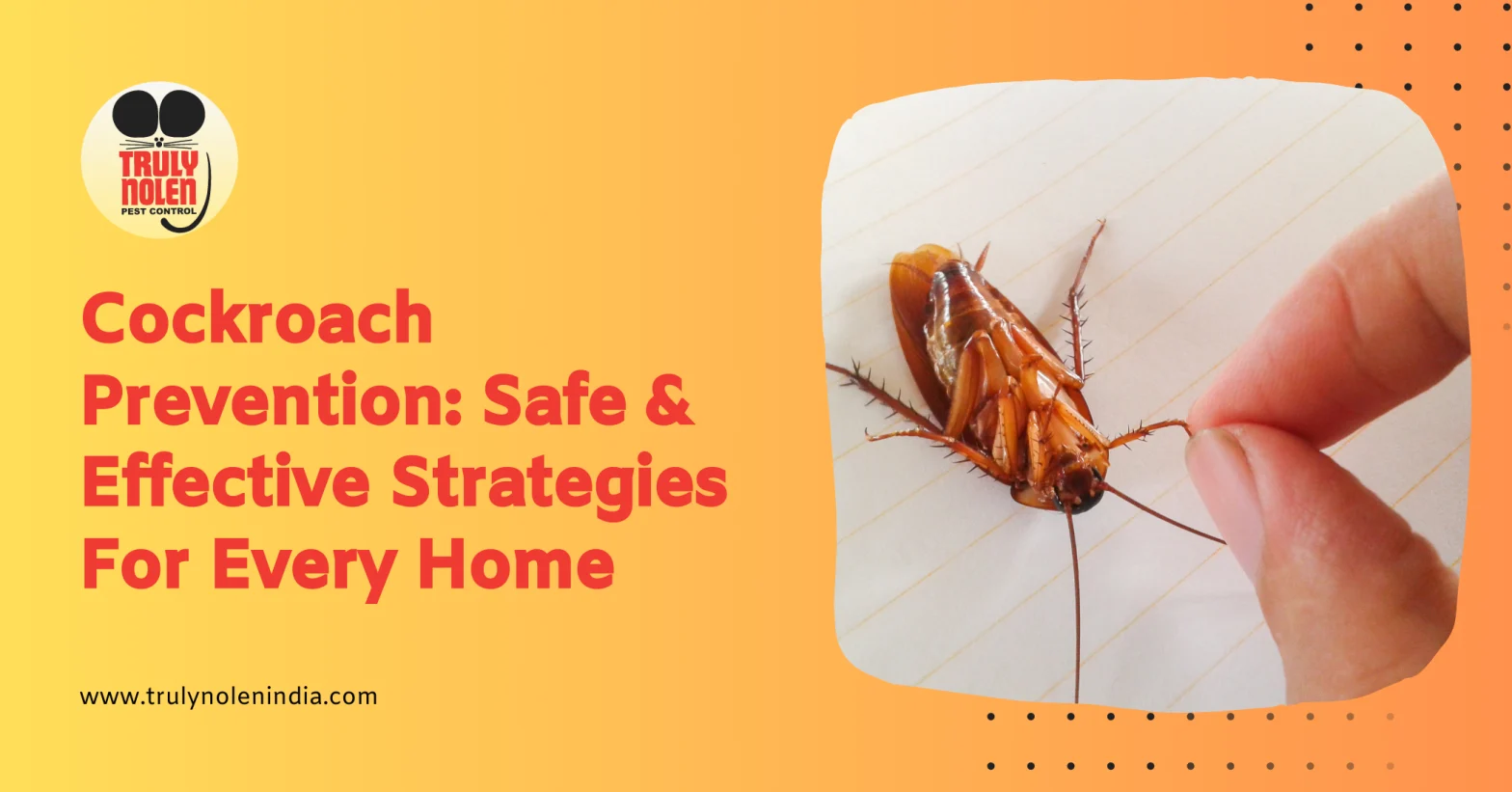It’s a sunny morning – you’re peacefully sipping your morning coffee when suddenly, you spot a creepy-crawly cockroach dashing across your kitchen countertop!
It’s an all-too-common household nightmare that can quickly become a reality if we’re not careful.
It’s not just the ick factor that should worry you; cockroach infestations can lead to serious health risks for you and your loved ones.
But, don’t worry! We’re here to help you with some effective strategies to keep these pesky critters out of your home!
Understanding Cockroaches
Cockroaches are quite the survivors – they have been around for millions of years, and they sure know how to adapt to various environments!
Name any cozy and dark places in your home – and, you will find them there. So, you might find them lurking in the nooks and crannies of your kitchen cabinets, behind appliances, or even under sinks.
They’re also crafty enough to squeeze into tiny gaps and cracks in walls, which can make it tricky to catch them!
Health Risks Of Cockroach Infestations

Cockroach infestations cause the following health risks:
1. Allergies and Asthma
Cockroaches produce proteins in their saliva, feces, and shed skin that can become airborne.
- These proteins can trigger allergic reactions and worsen asthma symptoms, especially in sensitive individuals.
- If you or someone in your household already suffer from allergies or asthma, a cockroach infestation can exacerbate the condition.
2. Transmission of Pathogens and Bacteria
Cockroaches are expert carriers of germs, pathogens, and bacteria.
- As they scurry around, they pick up harmful microorganisms from garbage bins and unsanitary areas.
- These pathogens can then be transferred to our living spaces, increasing the risk of infections and illnesses.
3. Food Contamination
Cockroaches have a ravenous appetite and can feast on our leftovers and spills.
- As they feed on unsanitary surfaces, they pick up disease-causing bacteria.
- When they crawl over our food and food preparation areas, they leave behind traces of these harmful bacteria, compromising food safety.
4. Cockroach Bite Reactions
While cockroaches are not known for biting humans, it’s not entirely unheard of.
- Cockroach bites may cause mild skin irritation and redness, leading to itching and discomfort.
- Scratching the affected area can increase the risk of skin infections.
Identifying Signs Of Cockroach Infestations

Spotting the telltale signs of a cockroach infestation is essential in taking timely action to prevent the problem from getting out of hand. Here are some key indicators to watch out for:
1. Small Droppings
- Cockroach droppings are small, dark, and cylindrical in shape, resembling tiny pellets or coffee grounds.
- You may find these droppings in areas where cockroaches frequent, such as kitchen cabinets, drawers, and countertops.
2. Egg Cases (Ootheca)
- Cockroaches lay their eggs in protective cases called ootheca.
- These egg cases are often brown or tan in color and can be found in hidden spots like cracks, crevices, and behind appliances.
3. Musty Odor
- Cockroach infestations can emit a distinct musty smell in the affected areas.
- If you notice an unusual odor in your kitchen or other spaces, it could be an indication of hidden cockroach activity.
4. Shed Skin and Body Parts
- Cockroaches shed their exoskeletons as they grow, leaving behind empty casings.
- Finding these shed skin and body parts around your home may be a sign of a growing cockroach population.
5. Presence of Smear Marks
- Cockroaches are oily insects, and they may leave smear marks on surfaces they crawl over.
- Look for dark, irregular marks along walls and baseboards, which may indicate cockroach movement.
Safe And Effective Cockroach Prevention Strategies

Here are the strategies that you can use to prevent cockroaches at home:
- Maintain a Clean and Clutter-Free
- Regularly clean your living spaces, especially the kitchen, dining area, and bathroom.
- Keep countertops, sinks, and floors free from food crumbs and spills.
- Declutter your home to reduce hiding spots for cockroaches.
2. Eliminate Entry Points
- Cockroaches can enter your home through tiny cracks and gaps in doors, windows, and walls.
- Seal these entry points with caulk or weatherstripping to prevent their easy access.
- Inspect and repair any damaged screens on windows and doors to ensure they remain tightly sealed.
3. Sealing Cracks and Gaps
- Inspect your home for any cracks or gaps in walls, windows, and doors.
- Seal these openings with caulk or weatherstripping to prevent cockroach entry.
- Pay special attention to areas around pipes and utility lines.
4. Eliminate Sources of Moisture
- Fix any leaks or water-related issues promptly to eliminate moisture that attracts cockroaches.
- Use dehumidifiers in damp areas to reduce humidity levels.
- Cockroaches are drawn to water sources, so cutting off their access can discourage their presence.
5. Natural Cockroach Repellents
- Consider using natural repellents like essential oils (e.g., peppermint, eucalyptus) to deter cockroaches.
- Diatomaceous earth can be applied in cracks and crevices as a safe and non-toxic barrier against these pests.
- Catnip can also act as a natural repellent due to its active ingredient, nepetalactone.
6. Proper Pet Food Storage
- Store pet food in airtight containers to prevent cockroaches from accessing it.
- Avoid leaving pet food bowls out overnight, as it can attract cockroaches and other pests.
7. Regular Inspection
- Conduct routine inspections of your home to identify signs of cockroach activity.
- Look for cockroach droppings, egg cases, and musty odors, especially in dark and secluded areas.
8. Outdoor Maintenance
- Trim bushes and trees around your home to eliminate potential entry points for cockroaches.
- Keep trash cans tightly covered and away from the house to discourage roaches from venturing close.
9. Fix Plumbing Leaks
- Cockroaches are attracted to moisture, so fix any plumbing leaks promptly.
- Ensure that sinks, faucets, and pipes are in good condition to reduce water sources for these pests.
10. Use Yellow Lights
- Replace outdoor lights with yellow bulbs, as they are less attractive to insects like cockroaches.
- This simple change can help reduce the likelihood of attracting roaches to your home.
Intelligent Snow Gel Service By Truly Pest Solution

The Intelligent Snow Gel Service (ISGS) offers a modern and effective method to tackle cockroach infestations.
This innovative service merges the latest technology with a specialized application process, guaranteeing the thorough removal of cockroaches and ensuring they don’t return.
Here’s a closer look at the ISGS process:
Step 1: Initial Assessment
Upon contact, a dedicated team will arrange a site inspection. A skilled technician will then evaluate your property, determining the extent of the cockroach problem and pinpointing major activity zones.
Step 2: Tailored Treatment Plan
Following the inspection, a customized treatment strategy using ISGS will be devised. This plan will be tailored to the unique requirements of your property, ensuring the most effective use of the snow gel bait.
Step 3: Precise Gel Application
The ISGS method involves the meticulous placement of a specialized dust and gel bait. This bait is positioned in areas commonly visited by cockroaches, such as crevices, cracks, and other concealed locations.
Step 4: Bait Consumption
The bait is a non-toxic, eco-friendly, and non-hazardous mineral with a long-lasting effect. It targets insects in various developmental stages and is non-repellent.
Its primary purpose is to attract cockroaches, encouraging them to consume it. Instead of using chemical sprays, the bait is strategically set to directly attract and manage the cockroach population.
Step 5: Secondary Transmission
Cockroaches, being social creatures, often engage with one another. This interaction allows the bait’s active ingredient to be shared among the entire cockroach community.
Step 6: Thorough Control
As the active component circulates within the colony, it ensures the total control of cockroaches, even those in difficult-to-access areas.
Benefits Of Using ISGS
The benefits are as follows:
- Eco-friendly Approach
The gel bait in ISGS is formulated to be harmless to humans, pets, and the environment, positioning it as an environmentally conscious choice.
- Durable Outcomes
The process of secondary transmission ensures that the root of the infestation is addressed, offering lasting results and hindering future infestations.
- Minimal Intrusion
Without the need for extensive spraying or fumigation, ISGS ensures a minimal disturbance to your daily life and household.
- Professional Implementation
Technicians are well-trained and prepared to administer ISGS with accuracy and effectiveness, guaranteeing the best outcomes.
- Monitoring and Reassessment
Post-application, periodic checks will be conducted to evaluate the success of the treatment and to tackle any remaining issues.
Your Home’s Guardian Against Cockroaches – Truly Pest Solution.

Say goodbye to the stress of dealing with cockroach infestations and welcome a clean, healthy living space with Truly Pest Solution!
We provide tailored, research driven, eco-friendly and hassle-free services to prevent cockroaches.
With ISGS, Truly Pest Solution offers a safe, efficient, and technologically advanced method to prevent cockroaches in your home and maintain a safe environment.


Leave a Reply